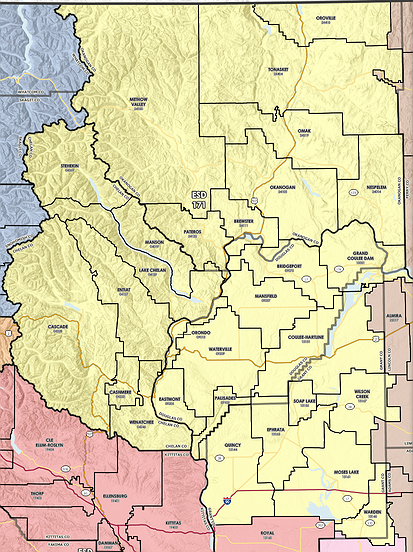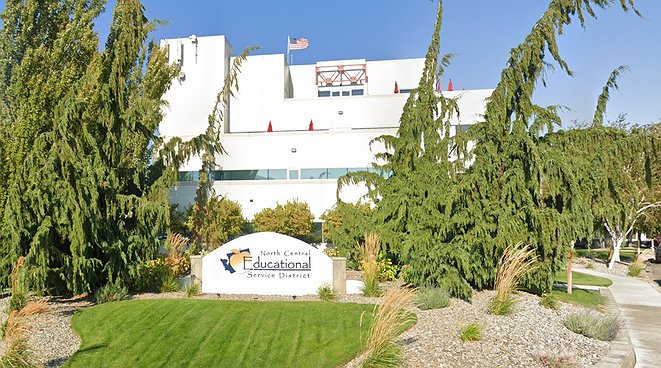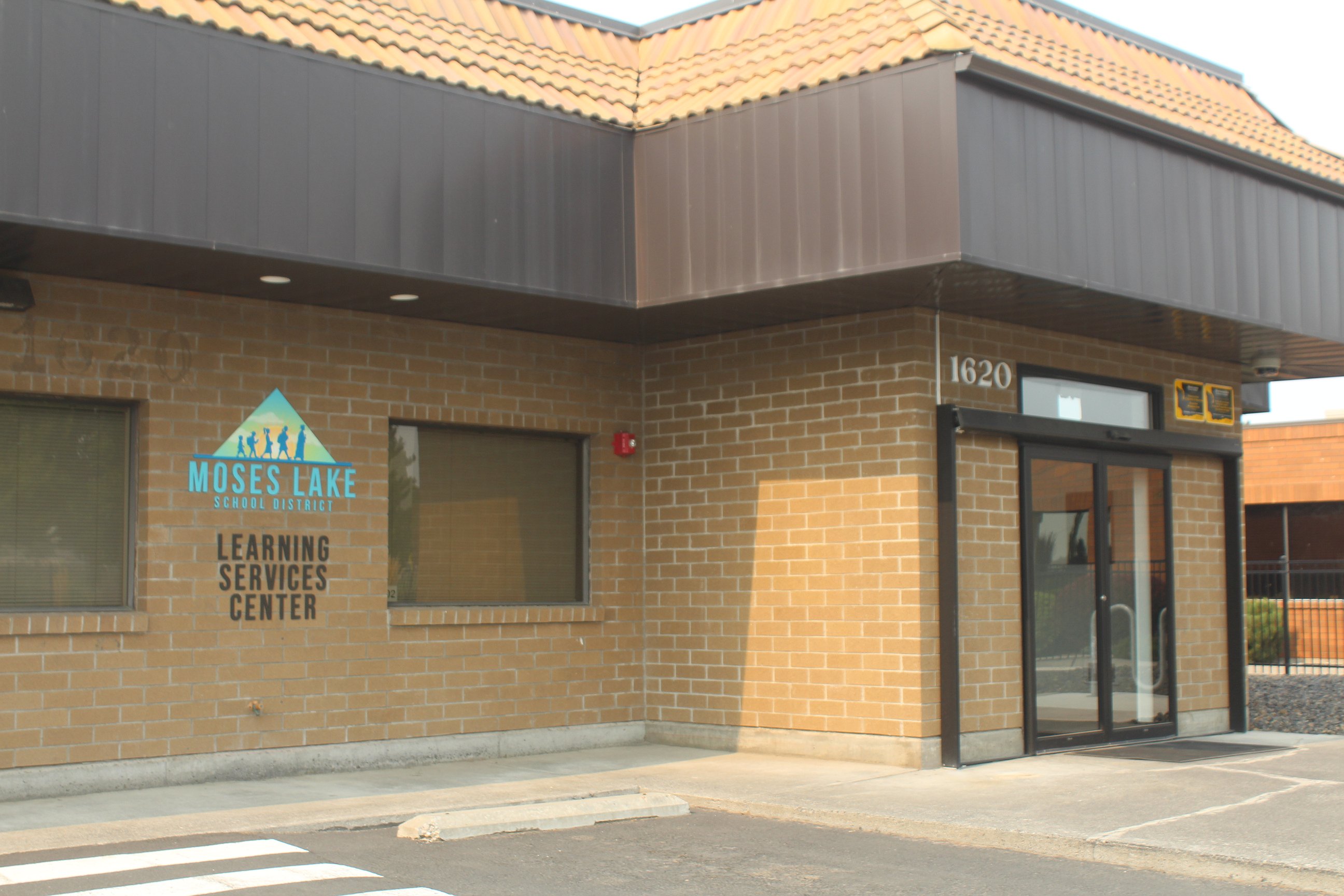North Central ESD Superintendent talks district services, goals moving forward
GABRIEL DAVIS | Hagadone News Network | UPDATED 1 year, 7 months AGO
Gabriel Davis is a resident of Othello who enjoys the connections with his sources. Davis is a graduate of Northwest Nazarene University where he studied English and creative writing. During his free time, he enjoys reading, TV, movies and games – anything with a good story, though he has a preference for science fiction and crime. He covers the communities on the south end of Grant County and in Adams County. | May 22, 2024 6:57 PM
WENATCHEE — Washington’s North Central Educational Service District, also known as ESD 171, offers more than 140 programs and services that address all areas of K-12 education and administration, according to the NCESD website.
Superintendent Michelle Price discussed what differentiates NCESD from other service districts and what similarities are shared between the nine different districts.
“In the realm of student support, we provide all kinds of opportunities that would help with student outcomes in each school district,” Price said. “For instance, connected learning. We have a whole team on the ground that helps connect industry partners and school districts to help make experiences available for students that they would not otherwise have, to explore careers, to investigate careers and maybe even to go into internships and apprenticeships.”
The other aspect of NCESD’s services are directed toward school districts more than directly to students.
“We provide districts with the service they need in real-time,” she said. “We don't tell them what to do authority and autonomy lies with each school district superintendent and school board.”
Services
Price explained some of the services that NCESD offers to districts.
“We have several of what we call instructional coaches, and they focus on the core instructional areas to provide professional development and school improvement work,” she said. “So English language arts, the sciences, STEM initiatives, really. And we provide support for directors, so special education directors, federal program directors, helping them to stay on top of what the laws are, how to keep your district in compliance, and just to provide general technical support, as they're designing and delivering those programs in their school districts … We also have had a science materials cooperative, where we share science materials across all four counties.”
In Grant County, many districts have utilized NCESD for forming strategic plans.
“We do provide strategic planning services. That's new this year,” Price said. “Moses Lake was one of our school districts that we provided that service to, and Warden, so we have a couple in Grant County that have gone through that process.”
NCESD differs from some other service districts regarding business services and insurance.
“We have two pools in our ESD. One is for workers (compensation), and one is for unemployment,” Price said. “So they're cooperatives that everybody pays into in lieu of being part of the state's unemployment or L&I Workers Comp. We pool those and participate in those. That's unique to our ESD.”
Another fairly unique aspect of the district is its Special Education Department, Price said.
“We have a pretty large special education department, where we provide speech and language pathologists or physical therapists or occupational therapists to school districts that might need like one or two days a week in their district, but they can't employ a master's level therapist full time,” she said.
Migrant populations are also a focus.
“We have liaisons that go out into the communities that we would consider migrant communities and help support them with both academics as well as accessing medical facilities … the children may need while they're in our schools,” Price said. “And then we have a whole early learning department.”
Price highlighted one particular service the community should be aware of.
“We do support childcare providers with professional development,” she said. “I think that's important for the community to know that that's an area where if you're a childcare provider and need training or need to get credit, you can access our team to be able to help support that.”
Goals
Price said the district analyzes data in addition to meeting regularly with school districts to determine the need for all of these services.
“(We use) qualitative data and quantitative data to figure out where those services are needed,” she said. “We will never go to the school district and say, ‘Here you go, this is the service that we have for you, you need to pay for it.’ I always say, what do you need, and we will make it happen.”
The service district covers a broad range of school districts, ranging from small to large.
“Our larger districts have more resources to be able to provide a lot of services themselves,” Price said. “Usually, our small rural districts lean in for additional services and support just because they don't have the resources. You may just have one superintendent who also is the teaching and learning person, who's also the federal programs director, special ed director, so we're their resource to help support them in that work.”
Price spoke a bit about how the service district is doing.
“We are rightsizing our programs and our services based on our district's needs. So we are making some reductions,” she said. “We've had some retirements and we're not filling those positions. We're moving some people around internally into different jobs that they are qualified for … just to rightsize and make sure that we are solvent and fiscally responsible and that we still have the services our districts need when they need them.”
A tighter budget is just part of running a business, Price said.
“We are doing what any business has to do when things are tough,” she said. “A goal for us is definitely to continue to provide our districts with high-quality services when they need it in real-time.”
Price elaborated on the district’s goals moving forward.
“We want to grow in serving and supporting the behavioral and mental health needs of our students across all four counties. That's definitely a goal,” she said. “And we're working towards how we can grow that program and those services to provide better support.”
All of NCESD’s services and goals are filtered through its strategic plan.
“We have four pillars; relationships, leadership, communication and advocacy,” she said. “We believe strongly that if we build relationships with our local school districts and we are able to serve them with a high-quality service, they will keep coming back.”
Gabriel Davis may be reached at [email protected].
ARTICLES BY GABRIEL DAVIS

Work-based learning lets students build their own futures
MOSES LAKE — Work-based learning provides education opportunities for the workforce to receive hands-on training and technical education and prepare themselves to enter various industries. Educators and workforce development professionals from Eastern Washington discussed some the training they offer and the benefits of their programs. Next Generation Zone, an affiliate of WorkSource based in Spokane, provides job training opportunities for youth and young adults ages 16 to 24. Program Coordinator Kate Martin said there are multiple benefits to the program. “One of them is a paid work experience, and that’s where we reach out to area employers who are willing to take a young person and train them,” she said. “This is a short-term learning experience, so it’s typically about 240 hours; sometimes it could be longer or shorter. We’re the actual employer; we cover all of their wages, taxes, the L&I, and the employer just agrees to give them the experience and train them in whatever field it is that they’re wanting to go into.”

Serving schools: ESD superintendents reflect on operations, priorities
MOSES LAKE — Educational service districts are government-mandated agencies put in place to provide services to school districts across the state. ESD Superintendents discussed what they do and their priorities in operating their districts. ESD 105, led by Superintendent Kevin Chase, serves four counties, including Kittitas, Yakima and portions of Klickitat and Grant counties and provides support for 25 school districts – including Royal School District and Wahluke School District – and more than 66,000 students. “We help them collaborate with each other as well or collaborate with other partners,” Chase said. “(It’s) a lot of advocacy work, either regionally or across the state, or even federally, working on different issues that impact our education. And we provide very specialized services in certain situations in order to meet the needs of our students in our region and of our school districts.”

Columbia Basin Project making headway through Odessa Groundwater program
CASHMERE — The Columbia Basin Project is making gradual progress toward completion with particularly significant accomplishments for the Odessa Groundwater Replacement Program in the last six months or so, according to Columbia Basin Development League Executive Director Sara Higgins. “When we’re dealing with a project of this size, advancement is kind of like watching paint dry, but yes, there have been (developments),” she said. “There are a lot of exciting things happening right now.” There are more than 300 miles of main canals, about 2,000 miles of lateral canals and 3,500 miles of drains and wasteways in the irrigation project, according to the U.S. Bureau of Reclamation website. The CBDL advocates for the operation of those waterways and for the project to continue “build-out.”









